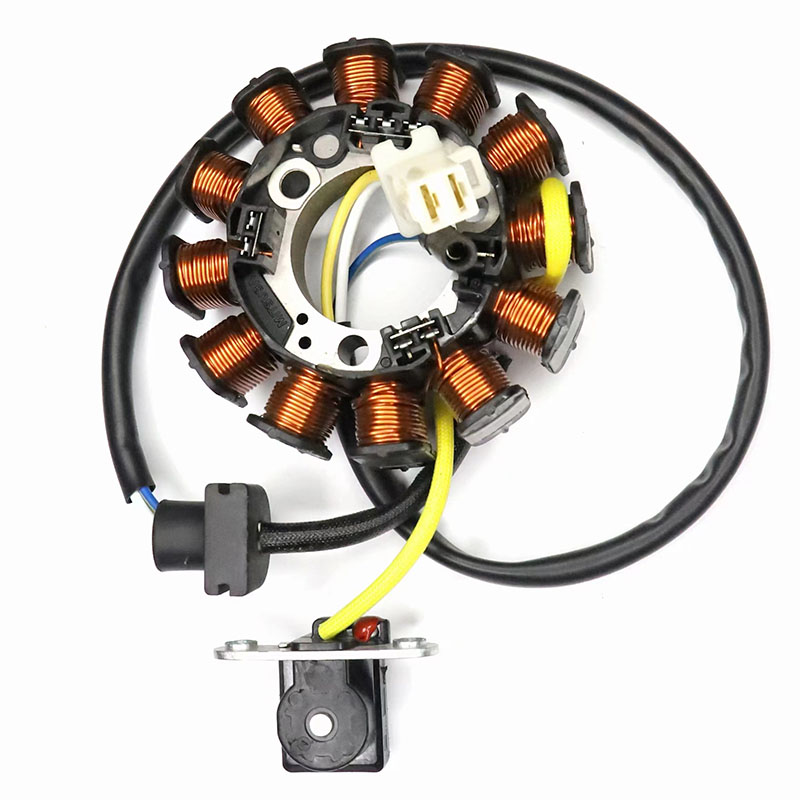

Motorcycles rely on a complex interplay of mechanical and electrical components to deliver an exhilarating riding experience. Hidden within the engine casing, near the rotating flywheel or rotor, lies a crucial yet often overlooked component: the motorcycle stator coil. Its primary function is to generate alternating current when the engine is running, acting as a generator for the motorcycle's electrical system. Learn how it works with Tongrunfeng below.

Motorcycle Stator Coil has many copper wire windings. These windings are wound carefully around a laminated iron core. They are fixed in one place. They go around the motorcycle rotor (or flywheel), but they do not touch it.
The rotor is linked straight to the engine's crankshaft. It has strong permanent magnets inside. The engine runs, and then the crankshaft makes the rotor turn.
The rotor turns, and its magnets get close to the Motorcycle Stator Coil’s copper windings—these windings stay still. When this happens, a magnetic field that changes is made. This changing magnetic field makes an electric current in the stator windings. This idea comes from Michael Faraday. He was the one who found the basic rule of electromagnetic induction.
The stator makes raw AC power. This power then goes to the motorcycle's regulator/rectifier.
The rectifier changes the AC power into DC power. The motorcycle's battery and most of its electrical parts need DC power to work.
The regulator keeps the voltage output under control. If there was no regulator, things would be different. When the engine speed (RPM) changes, the stator would make voltages that jump around a lot. This could hurt the delicate electronics and make the battery get too much charge. The voltage regulator stops that. It makes sure the battery and the motorcycle's electrical systems always get a steady voltage.
The power from the Motorcycle Stator Coil is used in three main ways:
- Battery Charging: The battery needs energy to start the motorcycle. It also needs energy to run accessories when the engine is off. This power refills that energy.
- Ignition Power: The ignition coil and spark plugs need power to work. They need it to make the spark that lights the fuel-air mixture. This power gives them what they need.
- Accessories Power: Things like lights (headlight, brake lights, turn signals), the instrumentation, the fuel pump, the engine control unit, and other electrical accessories all need power. This power supplies them.
| Feature | Description | Tongrunfeng Standard |
| Phase Configuration | Most modern motorcycles use 3-phase stators for efficient power generation. | 3-Phase Standard; Specific models as per OEM |
| Peak Voltage (AC) | Output per phase measured at specified RPM. | Varies by model (e.g., 50V-100V AC @ 5000 RPM) |
| Resistance (Ohms) | Measured between phase leads (cold). Critical diagnostic value. | Varies by model (e.g., 0.1Ω - 1.0Ω per phase) |
| Insulation Test | Resistance between windings & ground. Should be infinite (>1MΩ). | Exceeds 1MΩ @ 500VDC |
| Operating Temp. | Continuous safe operating temperature range. | -40°C to +180°C (+200°C peak) |
| Compatibility | Application coverage. | Extensive coverage for major Japanese, EU, US brands |